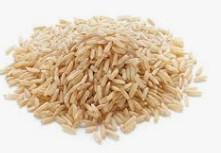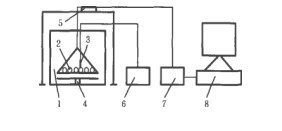Study on the effect of drying methods of germinated brown rice on nutritional components
ABSTRACT: The effects of different hot air drying temperatures (50, 55, 60, 65, 70, 75 C) and microwave drying power (406 W, 567 W, 700 W) on reducing sugar, soluble protein and GABA of germinated brown rice were studied.
The results show that the best drying temperature is 50 C in hot air drying and high temperature in microwave drying equipment. The optimum conditions of the two drying methods were compared. Considering the economy and time, microwave drying of 567 W at medium and high temperature was more suitable, followed by hot air drying at 50 C.
Key words: germinated brown rice; hot air drying; microwave drying brown rice; nutritional components


Brown rice germination refers to physiological and biochemical phenomena such as enzymatic hydrolysis of a large number of enzymes, enhanced respiration, hydrolysis of storage substances such as starch and protein, increase of vitamin content, significant increase of functional components such as gamma-aminobutyric acid, polyphenol and glutathione, and decrease of phytic acid content of anti-nutrient factors under certain physiological and active conditions, thus nutritional value and digestion. Absorption rate increased significantly.
Compared with white rice, brown rice is rich in protein, fat, cellulose, inorganic elements and vitamins. The emergence of germinated brown rice greatly enriches the varieties of rice products and has a very broad development prospects.
The main chemical components of brown rice are water, carbohydrates, minerals, proteins, lipids and vitamins. During the drying process, these substances will change greatly in morphology, proportion and physical properties due to different drying temperatures and humidities. Moreover, brown rice after germination has higher moisture content, is prone to mildew, is not easy to preserve, and must be dried to safe moisture for storage. However, with the decrease of water content of brown rice, the nutrient content of germinated brown rice will change.
Therefore, exploring reasonable drying methods of germinated brown rice has gradually become the focus of attention, but at present, domestic and foreign studies mostly aim at comparing the same drying methods, but there are few comparative studies on these drying methods. In this experiment, the effects of microwave drying and hot air drying on the nutrient content of brown rice were compared, and a better drying method for retaining the nutrient content of germinated brown rice was explored, which could provide reference for the drying and storage of germinated brown rice.
The contents of reducing sugar, soluble protein, VC and GABA increased after germination of brown rice, and the low temperature hot air drying during the drying process was more conducive to the maintenance of nutrients in germinated brown rice. Therefore, the optimum drying temperature for germinated brown rice in hot air drying was 50 C: the content of reducing sugar in the germinated brown rice after drying was 7 times as much as that of the original brown rice, the soluble protein was 2.43 times as much as that of the original brown rice, and the GABA was 11.01 times as much as that of the original brown rice.